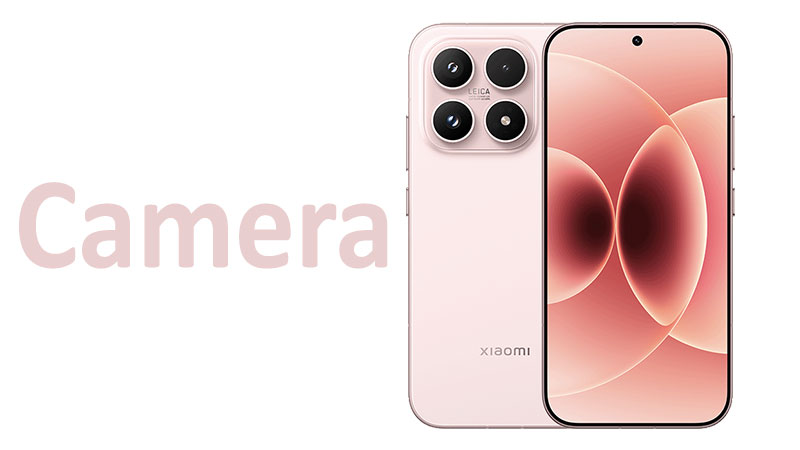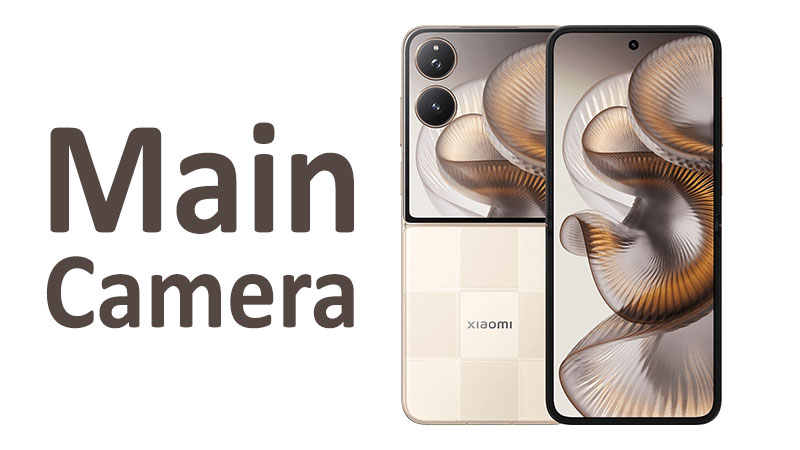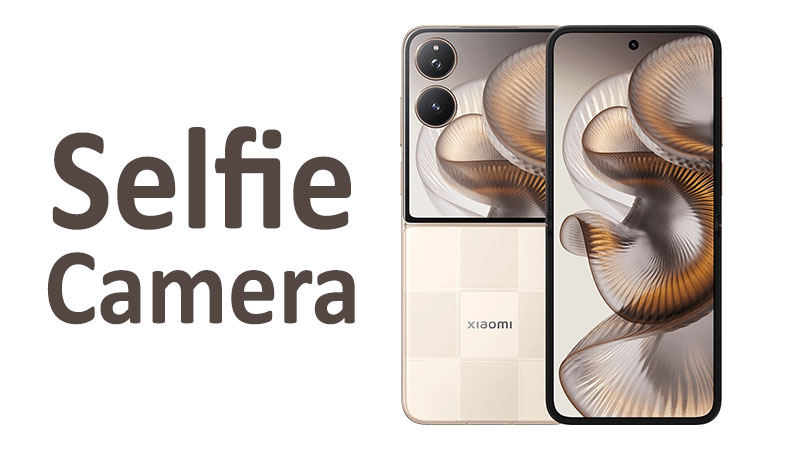The Xiaomi 17 Camera system sets a formidable standard for modern flagship imaging. This article presents a detailed review of its core specifications and overall performance. The base model offers a powerful triple 50 MP setup. It balances high resolution with professional-grade features. This comprehensive analysis will guide potential buyers. It reveals the strengths of this versatile imaging system. Ultimately, the Xiaomi 17 delivers exceptional results for both casual and serious photographers.
The Core Shooter: Primary 50 MP Wide Camera
The primary camera is the backbone of the Xiaomi 17’s photographic power. It features a high 50 MP resolution wide sensor. The lens offers a bright f/1.7 aperture. This wide opening maximizes light capture. The resulting photos show exceptional detail and clarity. The focal length is a standard 23mm equivalent. This is perfect for capturing everyday scenes and street photography.
Sensor Size and Light Gathering Efficiency
The sensor measures 1/1.31″. This is a very large size for a smartphone camera. It plays a critical role in overall image quality. The individual pixel size is 1.2μm. Larger pixels inherently capture more light. This process minimizes digital noise. Therefore, the camera performs very well in dimly lit environments. The system uses a 4-in-1 pixel binning technique. This results in cleaner 12.5 MP images with improved dynamic range. It is an effective computational solution.
Precision Focusing and Optical Stabilization
The main camera uses dual pixel PDAF (Phase Detection Autofocus). This technology enables lightning-fast focusing. It tracks moving subjects with high accuracy. This is crucial for capturing spontaneous action shots. Furthermore, the camera includes robust OIS (Optical Image Stabilization). The OIS physically compensates for camera shake. It ensures that handheld photos remain sharp. It also stabilizes video recording effectively.
Specialized Comparison: Flagship Sensor Dimensions
The 1/1.31″ sensor is slightly smaller than the 1/1.28″ found in the Pro and Pro Max models. However, it still significantly outperforms the 1/1.5″ sensors used by many competitors. This size differential provides a tangible advantage in low-light situations. It also produces a more pleasing natural depth of field. The Xiaomi 17, therefore, maintains a competitive edge in core image capture quality. It delivers flagship-level performance from its primary lens. The camera excels in capturing subtle textures.
Telephoto Versatility: 2.6x Optical Zoom
The Xiaomi 17 introduces a dedicated 50 MP telephoto lens. This lens provides 2.6x optical magnification. The equivalent focal length is a highly versatile 60mm. This is ideal for professional-looking portraits and isolating subjects. It is often referred to as a portrait-length lens. The dedicated hardware ensures superior clarity compared to digital zoom methods.
Aperture and Telephoto Sensor Details
The telephoto lens features an f/2.0 aperture. This is relatively fast for a dedicated zoom lens. It allows sufficient light transmission for clear images. The sensor size is 1/2.76″. The pixel size is 0.64μm. Computational photography works hard to process this sensor data. The results are highly detailed 50 MP zoomed photos. The processing unit reduces noise effectively.
Close Focus Prowess: Macro Capability
A key feature is the lens’s short minimum focusing distance. It can focus reliably from just 10cm out to infinity. This capability effectively transforms the 2.6x lens. It functions as a powerful tele-macro camera. Users can capture highly detailed close-up photos. This adds immense value for detail photography. The lens also includes PDAF for rapid focusing. OIS is also present to ensure stability at the 2.6x magnification.
Specialized Comparison: Zoom Reach
The 2.6x optical zoom is a notable upgrade from previous models. Many base flagships only offer a 2x optical step. However, it is less extreme than the 5x optical zoom found on the Pro and Pro Max variants. The 2.6x focal length is arguably more useful for classic portraiture. It provides a natural perspective for subjects. The ability to focus at 10cm makes this lens uniquely versatile within its class. This is a major selling point for everyday users.
Expansive Views: 50 MP Ultrawide Camera Analysis
The Xiaomi 17 completes its triple-lens setup with a 50 MP ultrawide camera. This module provides a very broad 102∘ field of view. It is perfect for capturing vast landscapes and large group shots. The 17mm equivalent focal length creates a dramatic perspective. It excels at framing large subjects like architecture.
Resolution Consistency and Image Detail
The ultrawide sensor measures 1/2.76″. Like the telephoto, it uses 0.64μm pixels. The 50 MP resolution across all three cameras is a major system strength. This consistency means all lenses produce images with similar detail levels. Users can crop into ultrawide shots without losing too much resolution. This provides significant post-production flexibility.
Distortion Control and High Dynamic Range
Ultrawide lenses naturally introduce geometric distortion. This occurs mostly at the frame edges. The Xiaomi 17 software applies advanced computational correction. It expertly straightens lines and minimizes the barrel effect. The resulting images appear natural and well-composed. The ultrawide lens also fully supports HDR capture. This ensures that the expansive scenes have balanced exposure from bright sky to dark foreground.
Specialized Comparison: Ultrawide Resolution
Many competing base model flagships use lower resolution 12 MP ultrawide sensors. The Xiaomi 17’s commitment to 50 MP across the board is a premium feature. This allows the base model to deliver far superior detail in ultrawide shots. It gives the Xiaomi 17 a decisive advantage in image quality consistency across all lenses. This is a key benefit over its direct rivals. The resulting ultrawide photos are usable for large prints.
Front-Facing Power: The 50 MP Selfie Camera
The front-facing camera maintains the system’s high-resolution philosophy. It features a 50 MP sensor for selfies and video calls. The lens has a 21mm focal length and an f/2.2 aperture. This setup is perfectly tuned for sharp, detailed self-portraits. It is also excellent for high-quality video conferencing.
Autofocus Technology for Vlogging
Crucially, the front camera includes PDAF (Phase Detection Autofocus). This is a feature often missing from front cameras. PDAF ensures the face remains sharply in focus. This works even if the user moves during a vlog or video call. This enhanced reliability is a major benefit for content creators. The front camera also employs gyro-EIS stabilization for video. This ensures that handheld selfie footage is consistently smooth.
High-Quality Video Capture
The selfie camera records high-resolution 4K video. It operates at 30 fps and 60 fps. This allows users to capture highly detailed vlogs and self-tapes. It supports 1080p recording as well. Both resolutions benefit from HDR10+ processing. This ensures excellent contrast and color quality. The front video performance is highly professional.
Specialized Comparison: Front Autofocus
Most base model flagships use fixed-focus selfie cameras. The Xiaomi 17’s inclusion of PDAF for the front 50 MP sensor is a clear upgrade. This distinction provides superior sharpness and versatility. Users do not need to worry about maintaining a specific distance for focus. This makes the selfie camera a more professional and reliable tool. This provides a clear advantage in modern video calls.
The Video Experience: 8K and Professional Codecs
The video recording suite on the Xiaomi 17 is genuinely impressive. It offers resolution and color options usually reserved for cinema cameras. This gives users powerful tools for professional video creation. The system handles these demanding formats efficiently.
Ultra-High Resolution and Frame Rates
The phone is capable of recording video at a massive 8K resolution. It captures this at 30 frames per second with HDR support. This offers four times the detail of 4K. It is ideal for large-screen viewing or extensive cropping. Furthermore, it records 4K at both 30 fps and 60 fps. This provides excellent flexibility for standard shooting. The video quality is truly stunning.
Professional 10-bit Color Depth Support
A key feature is the camera’s support for 10-bit color depth. It captures 10-bit HDR10+ and 10-bit Dolby Vision HDR. It also offers a dedicated 10-bit LOG gamma profile. These 10-bit modes capture over a billion colors. This is crucial for serious color grading in post-production. The LOG mode maximizes dynamic range for professional editing workflows. This preserves highlights and shadows effectively.
Slow-Motion and Electronic Stabilization
The phone offers multiple slow-motion options. It records 720p video at an astonishing 1920 frames per second. It also captures 1080p video at 960 frames per second. These frame rates capture fast motion in microscopic detail. The robust gyro-EIS stabilization works in all video modes. This ensures consistently smooth and professional-looking footage. The stabilization is vital for handheld shooting.
Specialized Comparison: Video Codec Access
Many base model flagships often restrict professional video features. They might limit 10-bit modes or LOG profiles to the Pro or Max variants. The Xiaomi 17 includes 10-bit Dolby Vision and LOG out of the box. This makes the base model a highly capable filmmaking device. It offers unparalleled color grading potential within its price category. This commitment to video is a major competitive differentiator.
Integrated Imaging Technologies and Auxiliary Features
The excellent performance of the Xiaomi 17 camera is more than just sensors and lenses. Several auxiliary features work together to enhance image quality. These features improve focusing accuracy, color fidelity, and overall shooting control. The phone benefits from deep hardware and software integration.
Leica Optics and Distinctive Color Science
The camera system is a result of the Xiaomi-Leica partnership. This collaboration ensures premium lens design and image tuning. The optics are optimized to reduce aberrations. This guarantees superior edge-to-edge sharpness in photos. The partnership also provides signature Leica color profiles. Users can choose between rich, vibrant colors or a more true-to-life authentic look. This gives creative users instant artistic control. The Leica modes are popular with enthusiasts.
Laser Autofocus for Rapid Low-Light Focus
The camera includes a dedicated Laser AF sensor. This technology works alongside the PDAF system. Laser AF instantly measures the distance to the subject. This is particularly effective in low-light conditions. It ensures extremely fast and accurate focus acquisition. The combined focusing system provides immense confidence in any shooting scenario. This dual AF strategy minimizes missed shots.
Color Spectrum Sensor for White Balance
A specialized color spectrum sensor is built into the camera module. This sensor precisely analyzes the ambient light. It reads the exact color temperature and quality of the light source. This data is used to automatically fine-tune the white balance. The result is consistently accurate and natural color reproduction. It prevents undesirable color casts under complex lighting. This is crucial when shooting indoors.
Dual-LED Dual-Tone Flash System
The phone features a sophisticated Dual-LED dual-tone flash. This flash uses two LEDs with different color temperatures. The system intelligently mixes them for illumination. This creates a much softer and more natural light output. This is far better than the harsh light of older, single-tone flash systems. It significantly improves portrait quality when flash is necessary. The dual tone flash adds depth to low-light portraits.
Pros and Cons of the Xiaomi 17 Camera System
Evaluating the Xiaomi 17 requires an objective look at its strengths and weaknesses. The camera system is powerful and versatile. However, buyers should be aware of where it differs from its “Pro” siblings. This helps in making an informed purchase decision.
Camera System Advantages (Pros)
- Consistent 50 MP Array: All three rear cameras offer high 50 MP resolution for maximum detail capture. This promotes a uniform image quality.
- Versatile Tele-Macro: The 2.6x zoom offers a classic portrait length. It also doubles as a 10cm close-focus macro lens. This adds unique creative options.
- Professional Video Tools: 10-bit LOG and Dolby Vision are included in the base model for advanced color grading. This is excellent for filmmakers.
- Strong Core Sensor: The 1/1.31″ main sensor delivers excellent low-light performance and image quality. It performs well in challenging scenes.
- Front PDAF: The autofocus on the 50 MP selfie camera provides superior sharpness and reliability for vlogging. This is a crucial feature for content creators.
Potential Camera System Drawbacks (Cons)
- Limited Zoom Reach: The 2.6x optical zoom is good but falls short of the 5x zoom on the “Pro” models. Users needing maximum reach might be disappointed.
- Smaller Telephoto Pixels: The 0.64μm pixels on the telephoto and ultrawide sensors are smaller than the main sensor. This requires more computational help in low light.
- Demanding File Sizes: 8K video and 50 MP images consume a large amount of internal storage rapidly. Storage management becomes a regular necessity.
- Aperture Difference: The f/2.0 telephoto aperture is slightly slower than the f/1.7 main lens. This slightly impacts low-light zoom performance.
Essential Knowledge for the Prospective Buyer
The Xiaomi 17 camera system is not just a collection of impressive numbers. It is an integrated tool designed for high-level creative output. Buyers must understand how this technology translates into real-world use and overall value. This knowledge enhances the ownership experience.
Image Signal Processing Power
The camera’s speed and capability rely heavily on the powerful underlying processor. The integrated ISP handles multiple tasks simultaneously. These include noise reduction, HDR stitching, and 8K video encoding. The processor ensures zero shutter lag. It allows for rapid capture of 50 MP photos. This computational power is what makes the system feel responsive. The processing is instantaneous.
Target User Demographics
The Xiaomi 17 is aimed at the discerning mainstream user. This includes general photography enthusiasts and casual content creators. They benefit from professional features like LOG video and high-resolution consistency. The 2.6x portrait lens is ideal for everyday use. Users who need extreme distance zoom should consider the “Pro” model. However, the base model provides a better balance for most people. This phone is a great all-rounder.
Storage and Workflow Requirements
Users must acknowledge the large file sizes generated by the system. 8K video files and 50 MP photographs consume storage quickly. Choosing a higher internal storage variant is highly advisable. Establishing a routine for backing up media to the cloud or an external drive is necessary. This ensures a smooth and continuous shooting workflow. Large files require careful management.
Value and Competitive Position
The Xiaomi 17 offers a phenomenal package of features for a base model flagship. It delivers professional 10-bit video and consistent 50 MP resolution. This positions it aggressively against rival flagships. It provides the core performance of the flagship lineup. It achieves this while maintaining a more accessible price point. The slight compromises, like the 2.6x zoom, are acceptable trade-offs for many users. The phone represents excellent value in the high-end mobile camera market.
Conclusion: Making the Optimal Camera Choice
The Xiaomi 17 Camera system is an undeniable success. It is built around a consistent, high-resolution triple 50 MP array. The large 1/1.31″ main sensor ensures brilliant photo quality. The 2.6x telephoto lens offers unique close-focus macro versatility. It is an excellent choice for portrait photography.
The inclusion of 10-bit LOG and Dolby Vision HDR is a major selling point. These features turn the base model into a serious professional video tool. The synergy of PDAF, Laser AF, and Leica optics guarantees superior, reliable performance. The overall system is highly dependable.
The Xiaomi 17 is the perfect choice for the user seeking a powerful, balanced camera system. It offers nearly all the professional features of its larger siblings. It is a highly capable, high-resolution device that handles any photo or video task with ease. This phone truly represents the future of mobile imaging technology. It sets a high bar for base model flagships.
Frequently Asked Questions (FAQ)
1. Can the Xiaomi 17 shoot professional RAW images?
Yes, the camera system supports RAW image capture from its 50 MP sensors. This feature provides maximum data for advanced editing workflows.
2. Is the 2.6x telephoto lens useful for macro photography?
Yes, the telephoto lens can focus as close as 10cm. This enables highly detailed macro shots with a pleasant, zoomed perspective.
3. What is the maximum video frame rate for slow motion?
The camera can achieve ultra-slow motion at 1920 frames per second when shooting 720p resolution video.
4. What is the role of the Leica lens in the camera system?
Leica provides optimized optical design for lens sharpness. It also offers unique color science modes for immediate artistic color grading choices in the photo application.
5. Does the Xiaomi 17 support 10-bit color for video recording?
Yes, it supports 10-bit color depth. This includes HDR10+, Dolby Vision HDR, and a professional 10-bit LOG gamma profile.



